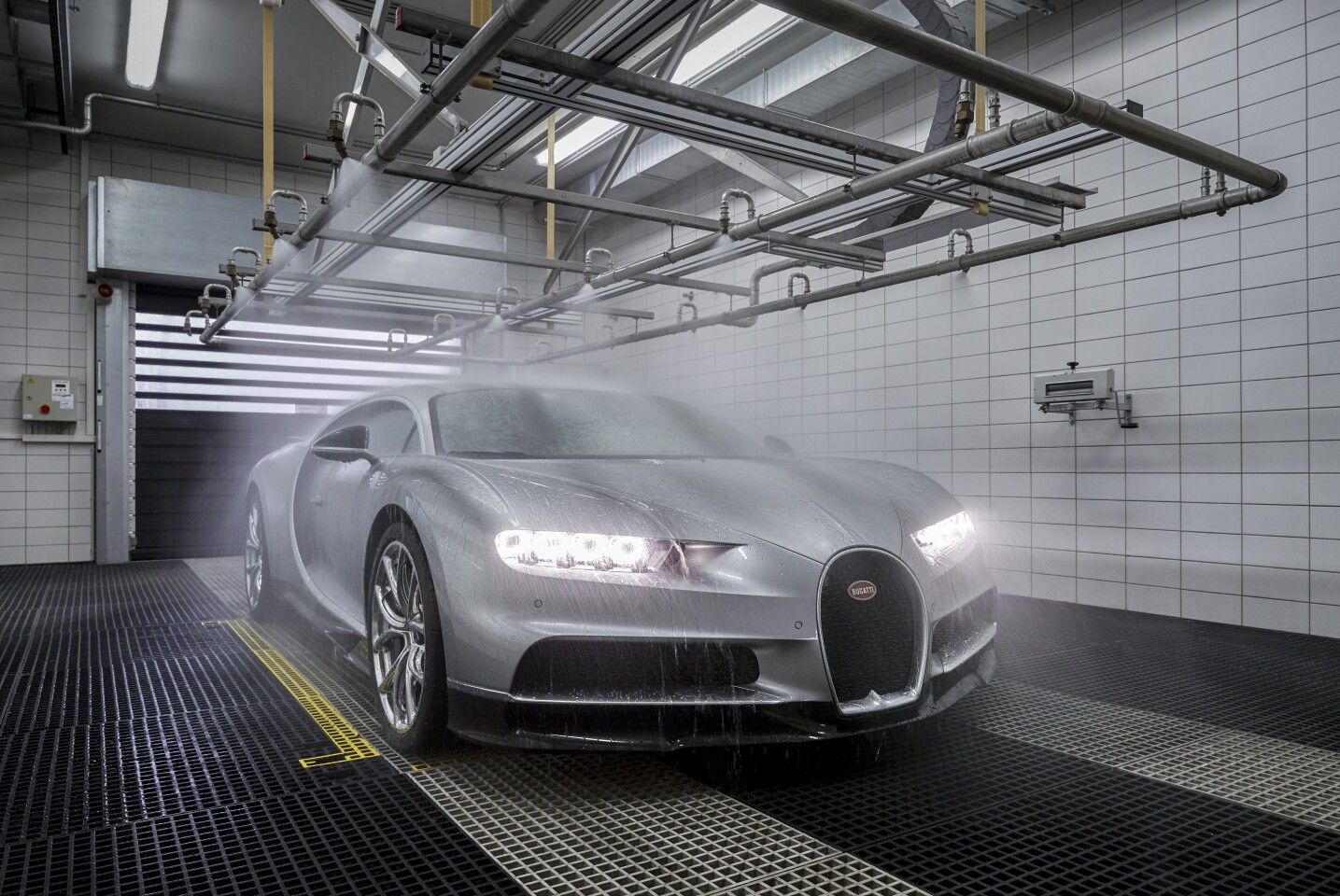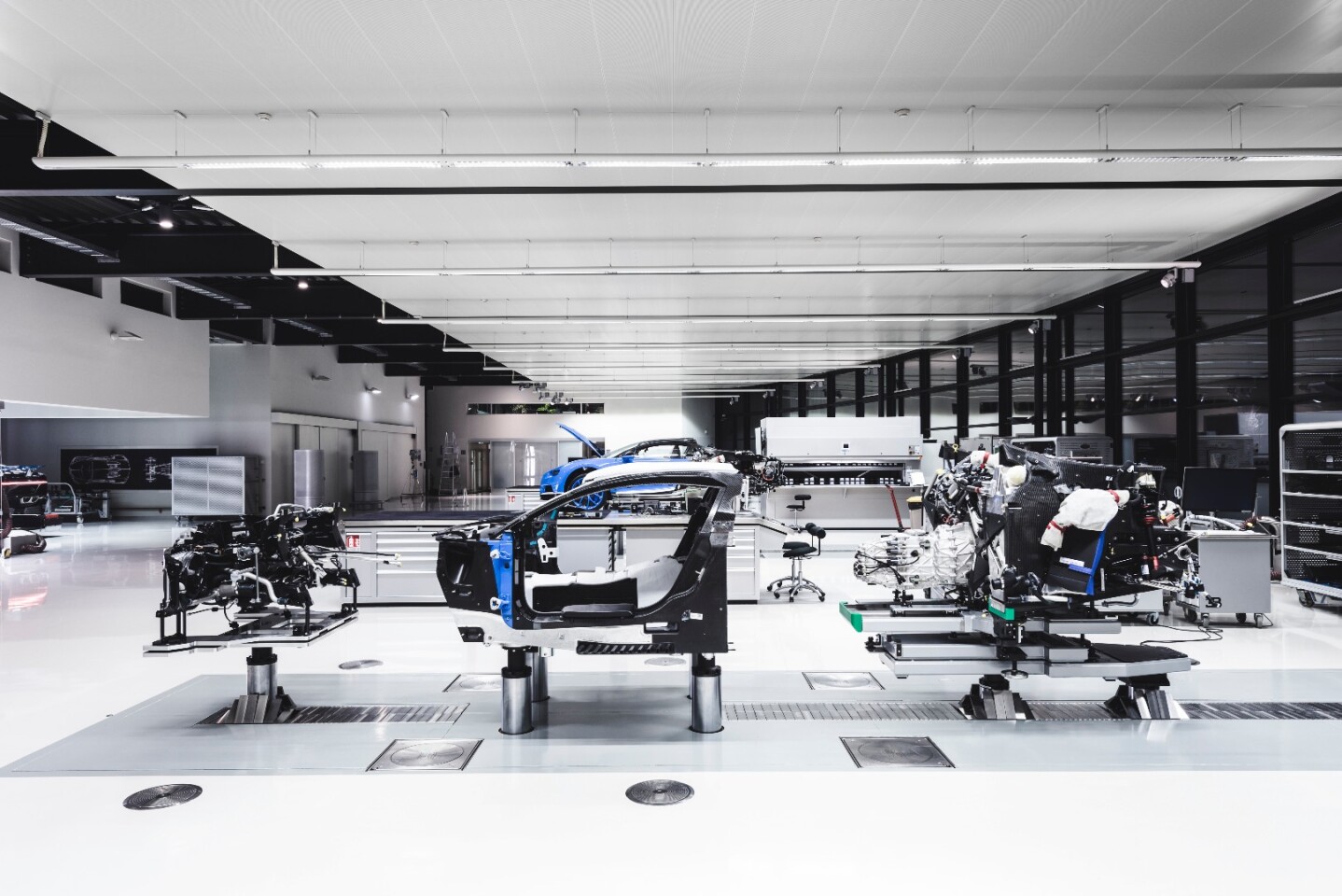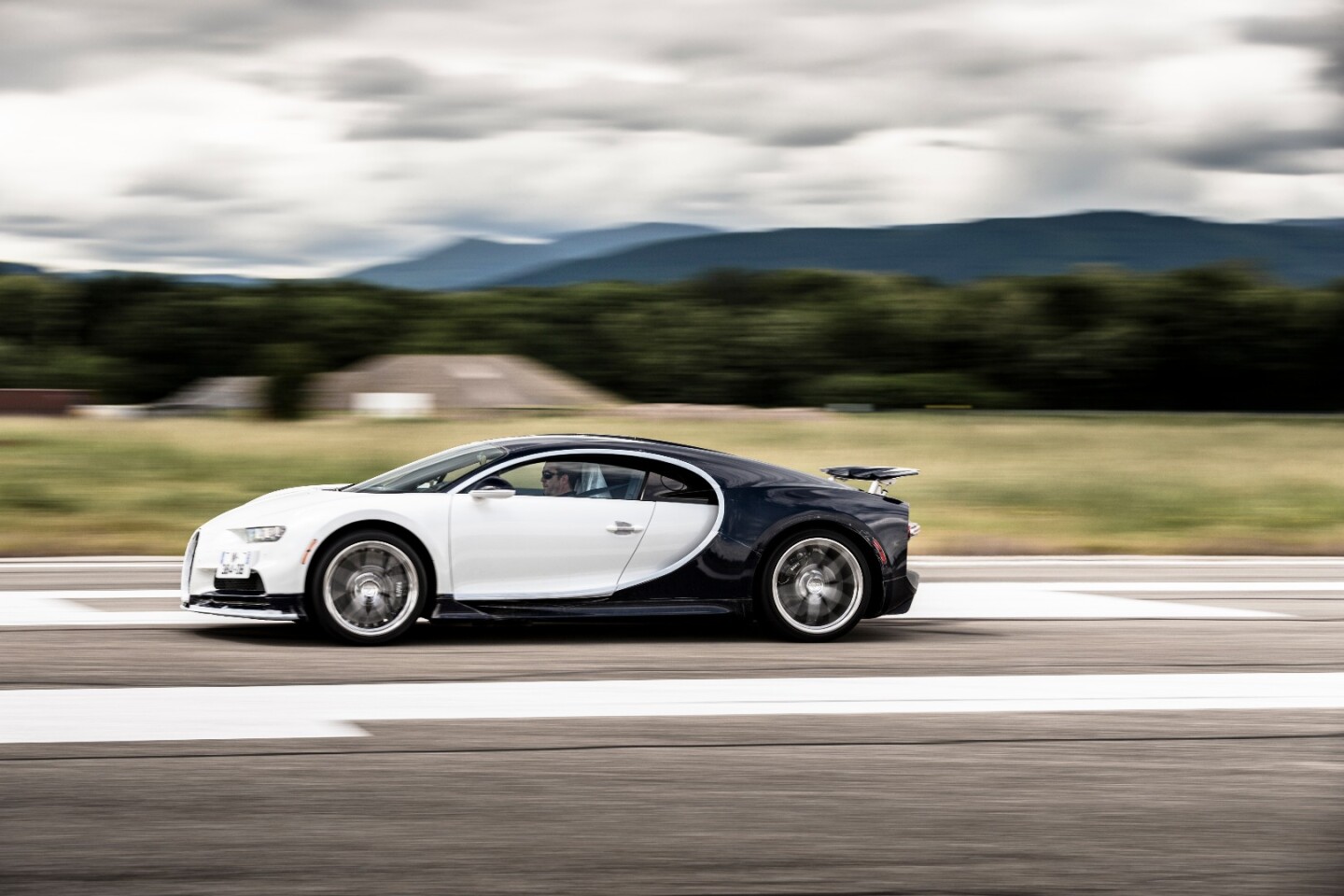Building and testing any production car is a fiendishly complex undertaking, but some cars require more time and attention than others – Bugatti's new supercar, for example. Production of the Bugatti Chiron has officially started in Molsheim, and the company has peeled back the curtain to show the world how 1,800 individual parts come together to make someone's dream a very, very expensive reality.
The production process starts, as you'd expect, with the customer nailing down the final specification of their car. Potential owners sit down with a consultant from Bugatti and run through the full range of options, choosing from a huge palette of standard paints and eight different carbon fiber weaves for the exterior before moving to the interior.
Here's a hot tip: if you're not good at making decisions, don't try and configure the cabin of a Chiron. As if choosing between 31 different types of leather and eight shades of suede wasn't enough, you can select a dizzying array of carpet, seatbelt and stitching options. And if that still isn't enough, the team at Le Maison Pur Sang is able to make an owner's most intricate fancies come to life with custom paint finishes, interior trims and option packs.
Once the customer has signed off on their final configuration, a production slot is assigned to the car and parts are ordered, starting a process generally spanning nine months. Before all the additional parts arrive, the naked bodyshell is assembled and sent to the paint shop, where it's lavished with up to eight coats of paint. Each layer is done by hand, sanded back and polished before the next is applied – while cars with naked carbon fiber on the outside go through a separate, equally time consuming process.

Unlike most car factories, Bugatti's facility in Molsheim isn't fitted with conveyer belts or robots. The entire production process is carried out by hand across 12 individual stations, each of which is responsible for a small part of the overall construction of the car. The first station takes the quad-turbo W16, which comes pre-assembled from VW in Salzgitter, and prepares it for insertion into the chassis, before the second stop actually installs it.
Given its remarkable 1,500 hp (1,119 kW) of power and 1,600 Nm of torque, the engine can't simply be dropped into the rear of the Chiron and bolted into place like most cars. The whole rear end is actually built around the engine, while the base monocoque and front end are connected and the wiring looms linked. Around the same time as all of this, the pipes connecting the engine with its front radiators are hooked up.
Having married the rear end with the monocoque, a feat which requires just 14 titanium bolts, the four wheels are bolted on and the car rolls forward to its next station, where all the fluids are put into the car, and the engine is fired up for the first time.

Although Bugatti had already built a specific dynamometer to test the Veyron, it couldn't handle the power and torque being put down by the overhauled W16 in the Chiron, so the team totally rebuilt it. The result is the most powerful rolling dyno in the world. It's installed in a room all of its own, and can run at up to 200 km/h (124 mph) while the Chiron accelerates flat out with an engineer behind the wheel. All up, the tests take around three hours, monitoring the connection between engine and gearbox, the airflow meter, clutch and electronic driver aids.
Once it's survived all of the tests on the rolling dyno, the Chiron is finally fitted with all its exterior panels. Given how thin some of the carbon panels are, they're actually subjected to a pre-assembly stage, where a team of technicians installs them on special frames and checks for any structural or cosmetic damage. The process is set up to closely mirror the real deal, which means the frames have the same mounting points as the car, and the lighting in the pre-assembly area is deliberately set up to match the real factory.
In spite of this extensive preparation, it can take between two and three days to have the panels installed and adjusted to meet the strict tolerances prescribed by Bugatti. Once they are (finally) in place, the car is put through a 30 minute monsoon test to make sure there aren't any leaks. Only once this test has been successfully completed can the interior be installed and the final, real-world shakedown take place.

As you might imagine, owners wouldn't be particularly pleased to receive their new Bugatti with chipped paint and dirty wheels caused by its final shakedown, so the engineers in Molsheim swap the final wheels and underbody for a standard factory set, and spend a day wrapping the exterior in protective foil. The car is then driven 300 km (186 mi) to an airport, where it's put through its paces beyond 250 km/h (155 mph) on the runway. The drive home is completed on the autobahn, the transmission oil is changed and the Chiron is put through one more 50 km (31 mi) drive before it's given the all-clear.
Having completed all the necessary performance tests, the Chiron is stripped of its foil wrap for a clean and polish. After two days of paint preparation, the car is transferred to a special light tunnel, where a specialist inspects the top coat and marks out any blemishes for the paint shop to polish out. Having received the approval of the paint shop manager, the car is then inspected by the Head of Sales, who will provide managerial approval and organize an occasion to have the car handed to the customer.
If all of this sounds like overkill to you, it's worth remembering each Chiron costs at least US$2,612,000 before options. The customers buying one of these cars expect perfection, and Bugatti has built its reputation on delivering just that.
Now, we have an idea of how they do it.
Source: Bugatti



























